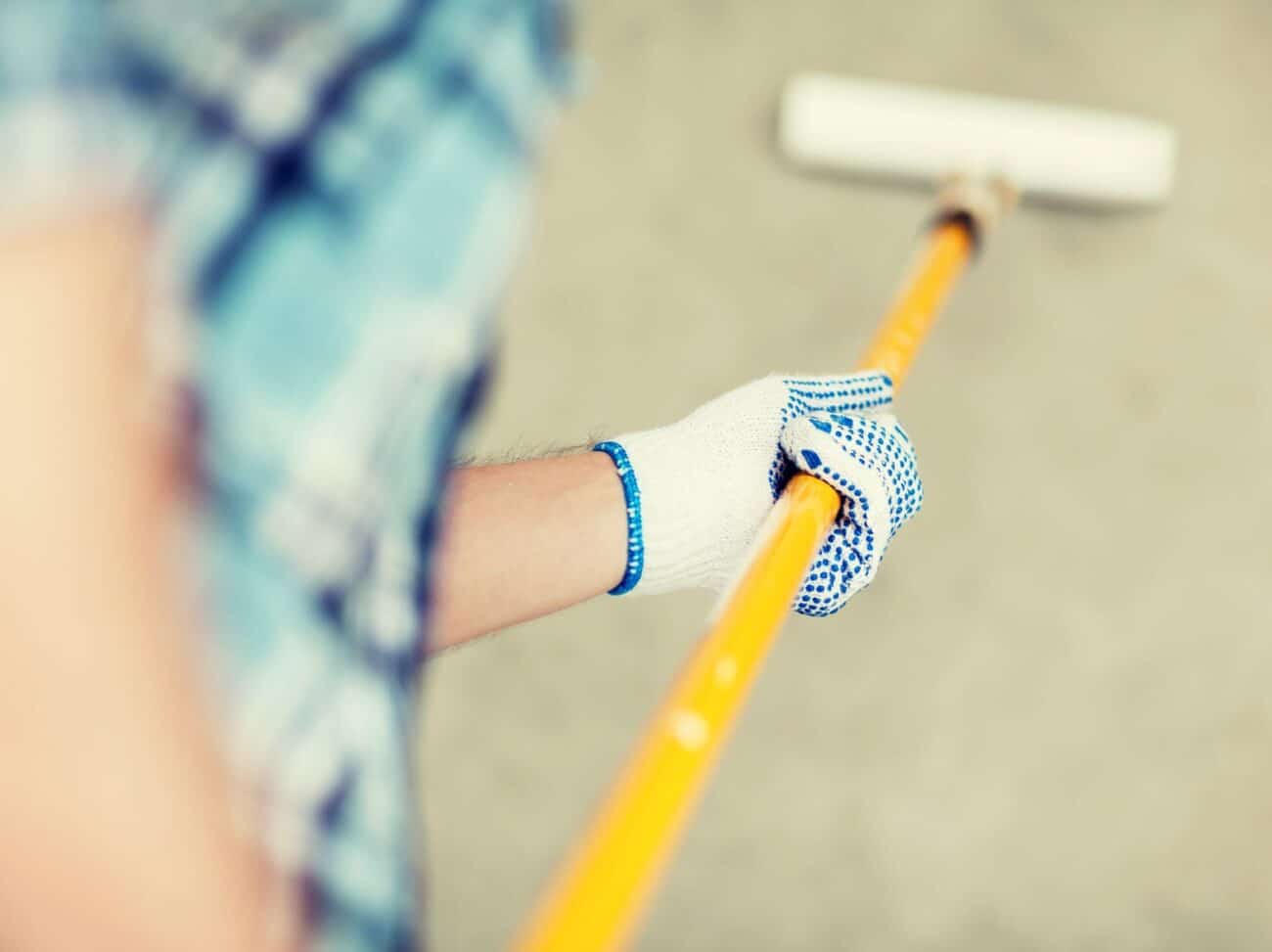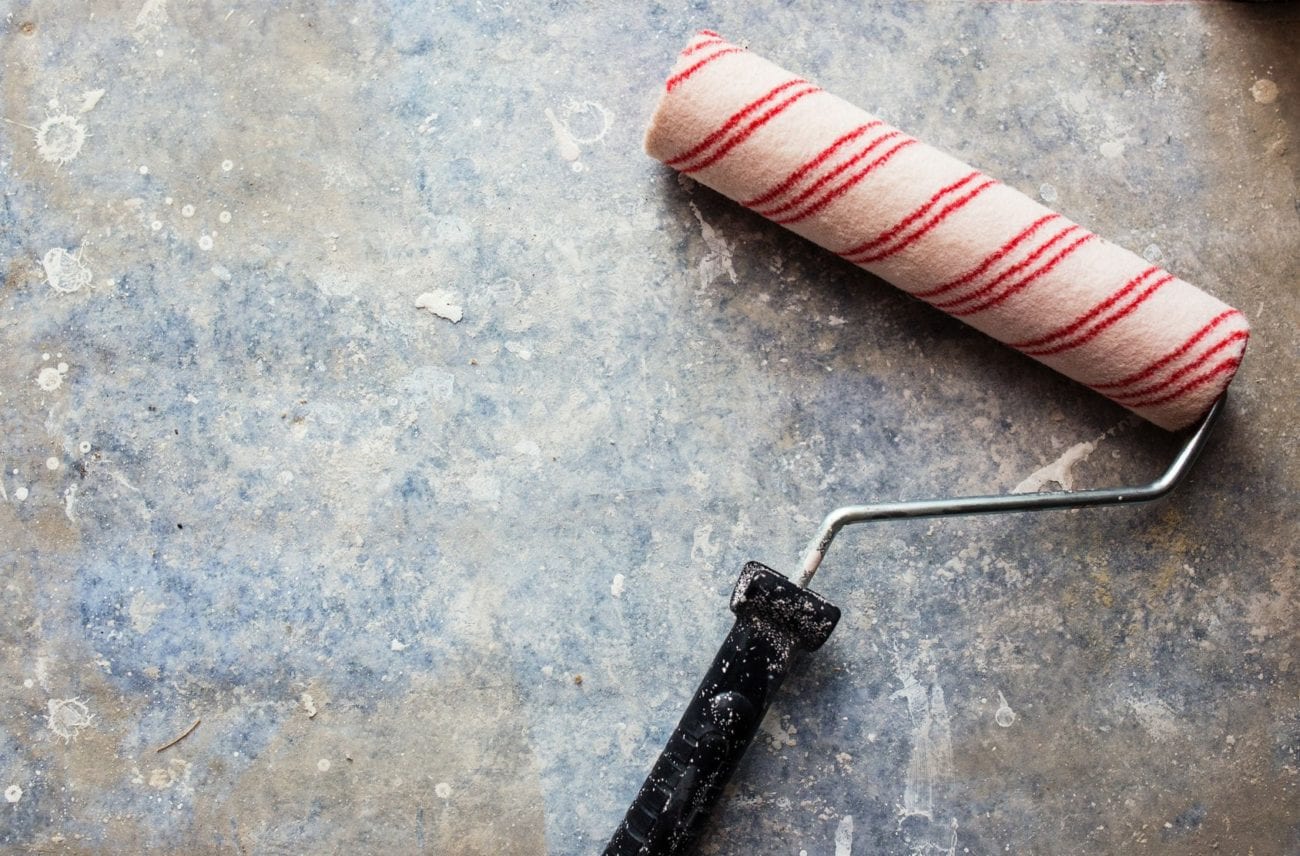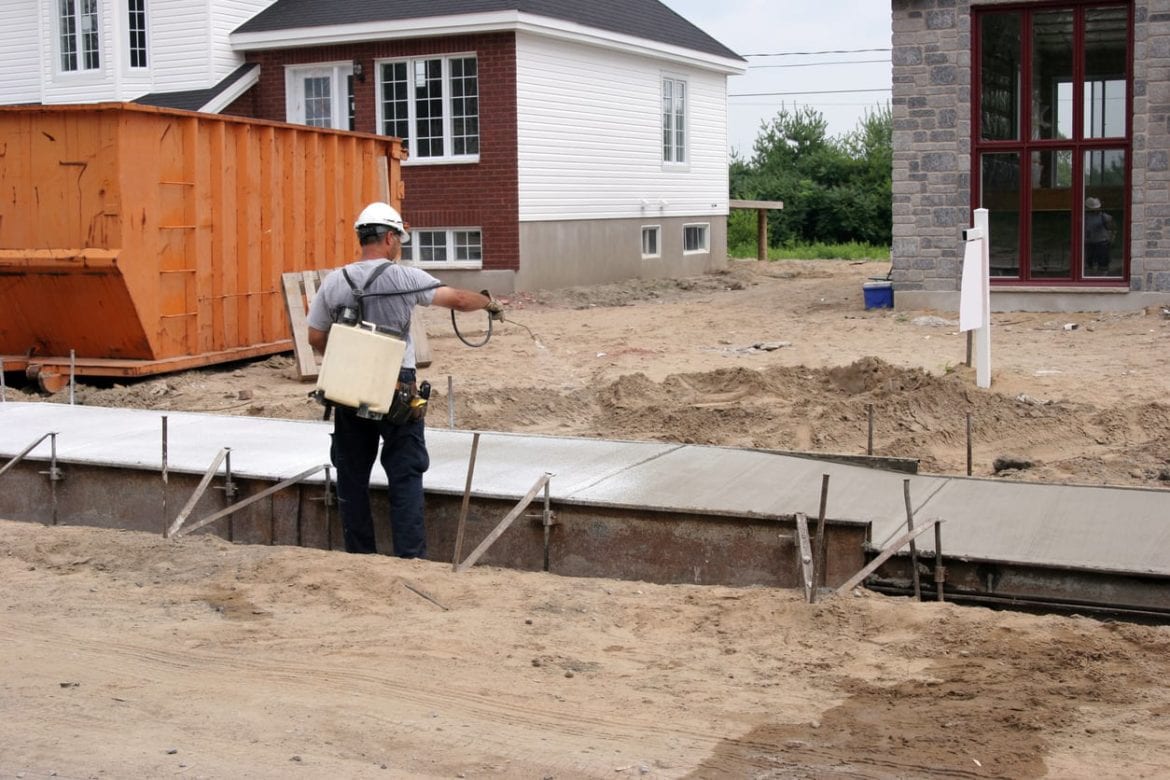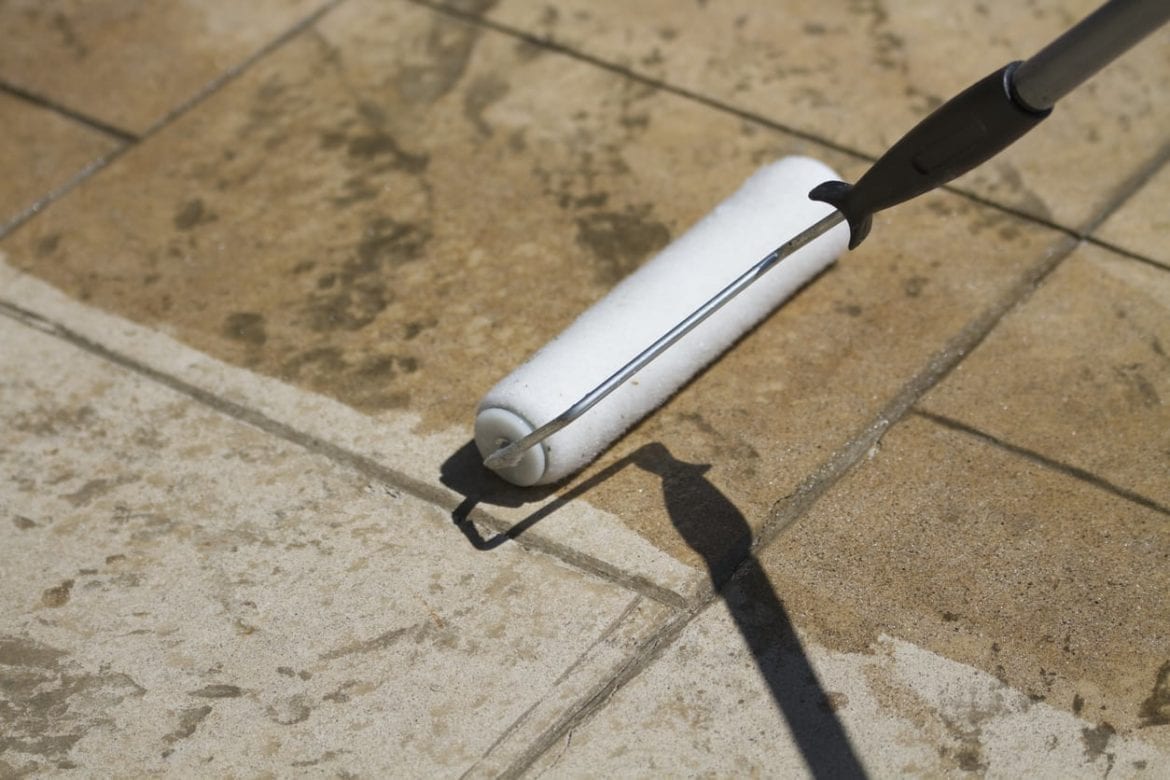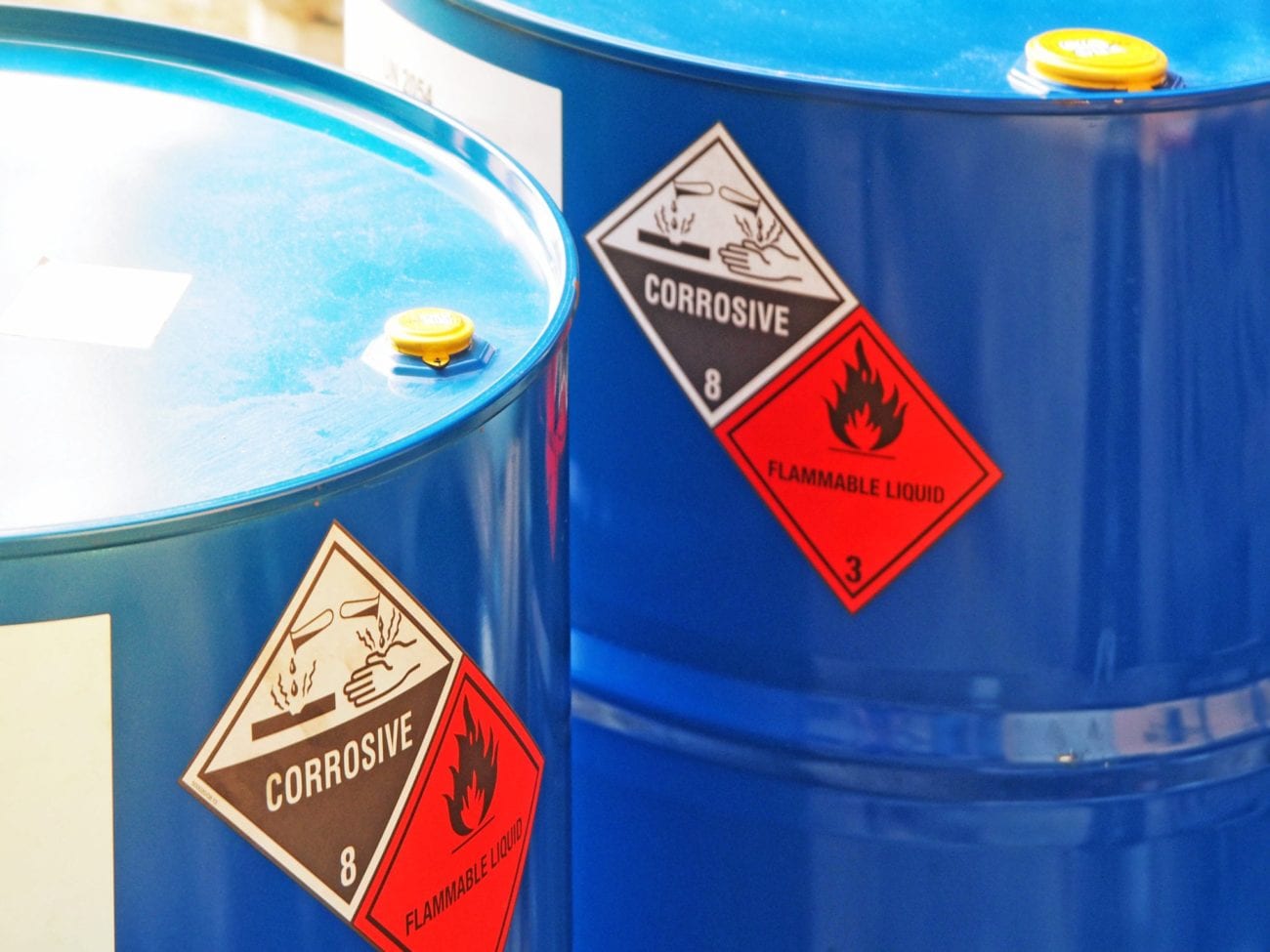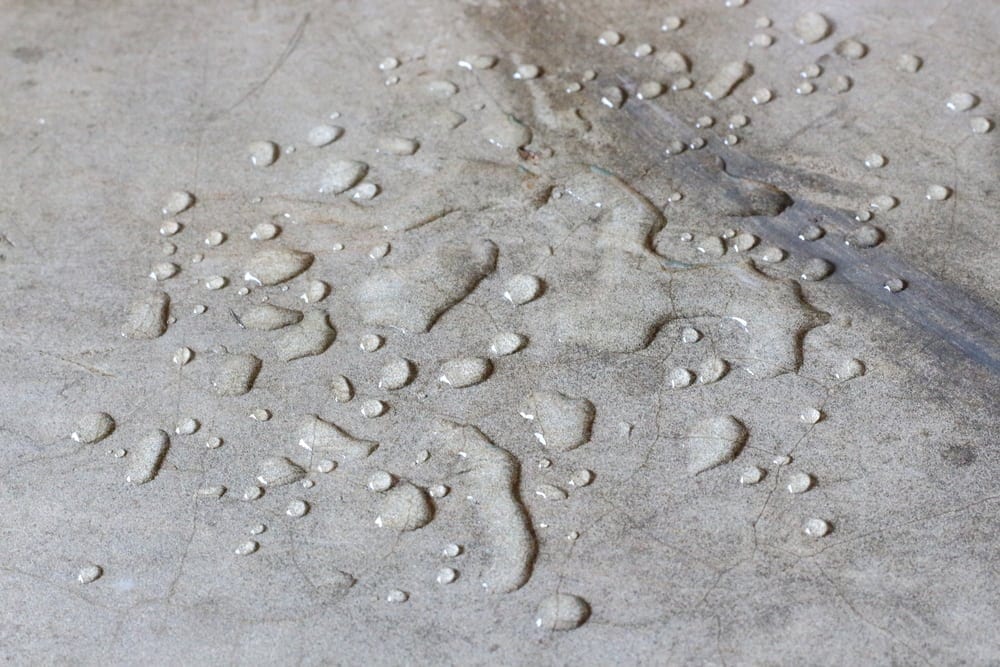What is a concrete sealer?
A concrete sealer is applied to concrete substrates, brick, masonry, stone, stucco, stamped concrete, cinderblock, slate and exposed aggregate.
A concrete sealer can protect concrete from water, deicing salts, staining, weathering, chlorides, rust, mold and mildew just to name a few.
A concrete sealer can also enhance the appearance of concrete to bring out the texture, colors and patterns with a matte, low sheen, satin, wet look or high gloss finish.
A concrete sealer can extend the life of a concrete slab and prevent the need to replace it down the road.
There are a lot of different types of concrete sealers: penetrating concrete sealers, decorative concrete sealers and durable concrete coatings.
A concrete sealer can be used in basements to waterproof concrete or reduce moisture.
A concrete sealer can be used on concrete driveways to waterproof, keep out chlorides and salt and prevent spalling, pitting and cracking.
A concrete sealer can be used on patios, pool decks and on pavers to protect from the chlorine and salt water or to give a nice decorative look.
A concrete sealer can be used on a garage floors to protect them from automobile fluid, oil and grease staining, and an epoxy floor coating can be used with flakes, paint chips or metallic sand.
A concrete sealer can be used on commercial and industrial applications, highways, warehouses, parking decks and bridges to prevent cracking, staining and to protect the concrete from wear.
A concrete sealer will help protect and extend the lifespan of the concrete; for a specific product check out our Best Concrete Sealer Recommendations
How long do concrete sealers last? In order to effectively answer this question we first need to determine the type of concrete sealer that was used in order to determine the longevity of it. We have broken down concrete sealers into the following categories:
Decorative Concrete Sealers: decorative concrete sealers usually refer to acrylic or lacquer based products. They add color enhancement, shine, wet look and gloss finishes to concrete. They have the shortest longevity; since they sit on the surface of the concrete and do not penetrate into the concrete they are at high risk of UV degradation and wear. Decorative concrete sealers are available as solvent or water based products and can last anywhere from 6 months to 3 years. Solvent based concrete sealers will last longer than water based concrete sealers. Keep in mind that if you like the decorative look you are going to have to pay to keep it up.
Durable Concrete Coatings: durable concrete coatings refer to epoxy and urethane based products. The name “durable concrete coating” is appropriate because they are able to withstand abrasions, chemicals, machinery, equipment and heavy traffic. The most important factor in regards to how long do concrete sealers last is surface preparation. If you do not properly acid etch or grind the floor prior to using this type of coating they will fail much sooner. If the concrete has been properly prepared durable concrete coatings can last upwards of ten years.
Penetrating Concrete Sealers: penetrating concrete sealers are usually silicate, silane, and siliconate based products. They penetrate into the concrete and dry clear; they do not leave any surface enhancement or sheen. Silicate based densifiers last for the life of the concrete. Once they are applied you do not need to apply them again. That being said you do not want to use a silicate based densifier without also using a penetrating water repellent or penetrating waterproofing concrete sealer. Water repellent and waterproofing silane and siliconate based products can last anywhere from 5-10 years. The longevity will depend on UV exposure, deicing salt exposure and vehicle traffic among other factors. We like penetrating concrete sealers because they protect the concrete from salts, water and stains, and they wear extremely well in comparison to decorative concrete sealers.
If you are looking for the Best Concrete Sealer for 2018 check out our review
One of the most common questions we are asked is how long do you have to wait to seal concrete.
If you would like to seal the concrete on the same day that it has been poured or sooner then the industry standard 28 days, you can use a concrete cure and seal sealer. These concrete cure and seal sealers help concrete hydrate by holding moisture in a protective film. There are two types of cure and seals, penetrating cure and seals and dissipating cure and seals. The dissipating cure and seals that help concrete to cure, are typically of an acrylic chemistry and will wear away in the first six months or so. At this point you are then free to apply a penetrating concrete sealer or a decorative concrete sealer if you desire a wet look or high gloss finish.
In order to avoid this two step process, you can use a penetrating concrete cure and seal which will help to fully hydrate the slab in a protective film without wearing away. Since there is usually some sort of silane in a penetrating cure and seal, the concrete will be protected from deicing salts and freeze-thaw cycles. You do not need to worry about removing the cure and seal in order to apply a penetrating concrete sealer nor do you need to wait for it to dissipate. These products are all-in-one solutions that need to be applied by the contractor at the time the concrete is poured.
If you are not applying a concrete cure and seal, or if you have time to wait most sealers require about 28 days for the concrete to fully cure before applying a concrete sealer. Some manufacturers have products available that can be applied as soon as new concrete can withstand the weight of the installer, but typically if you are looking to apply a penetrating concrete sealer, decorative or epoxy/urethane coating you will need to wait the industry standard 28 days for concrete to fully cure before applying a concrete sealer.
What does a concrete sealer do? Here are Concrete Sealer Reviews we are big advocates of sealing concrete. If you have ever had to replace a concrete slab you know how costly it can be and you’ve probably learned how easy and cost efficient it would have been to use a concrete sealer.
- Concrete sealers provide enhancement: using a decorative concrete sealer you can beautify the substrate, bring out the colors, textures and enhance the concrete with a low sheen, high gloss or wet look finish. Or if you are looking for a matte finish, penetrating concrete sealers do not provide any enhancement.
- Concrete sealers prevent cracking: penetrating concrete sealers that are silane or silane-siloxane based are able to protect the concrete from salts. Salts like deicing salts and mad chlorides are used by municipalities on the roadways. Vehicles that drive on the roadways can track these salts into driveways and garages. If the concrete is not sealed it can result in spalling, pitting and cracking.
- Concrete sealers waterproof: moisture vapor barrier coatings are typically applied to below grade applications like basements or warehouse floors before the installation of carpet, tile and hardwood flooring. They are able to waterproof and prevent any moisture from seeping through resulting in dry basements without the musty odor and smell.
- Concrete sealers extend the lifespan: concrete sealers are able to extend the lifespan of the concrete by keeping out water and salts and preventing corrosion.
- Concrete sealers prevent costly repairs and/or substrate removal
- Concrete sealers prevent mold, mildew and efflorescence: penetrating concrete sealers keep out the water and in turn they help to resist the growth of mold, mildew and efflorescence.
- Concrete sealers make cleaning concrete easier: By using a durable concrete coating or a penetrating concrete stain repellent sealer it will make spills and stains easier to clean.
If you have ever wondered, what does a concrete sealer do, hopefully you know know that the benefits outweigh the initial investment. Concrete sealers can be used on new and old concrete, horizontal and vertical concrete, indoor and outdoor concrete. Even though it may seem like a big upfront investment, it is one of the best and smartest decisions you can make for your home or business.
According to the OSHA.gov website, “In 2003 the United Nations adopted the Globally Harmonized System of classification and labeling of chemicals (GHS). The GHS includes criteria for the classification of health, physical and environmental hazards as well as specifying what information should be included on labels of hazardous chemicals as well as safety data sheets. Adopted on 3/26/2012 labels must include a signal word, hazard pictograms, manufacturer information, precautionary statements, hazard statements and product name. All hazardous chemicals shipped after 6/1/15 must be labeled according to these standards.”
All concrete sealers should now be labeled and shipped according to these standards. If you live in the State of California, manufacturers are also now required to inform you of any toxic chemicals in their products.
According to the Ca.gov website, ” In 1986 California voters approved an initiative to address their growing concerns about exposure to toxic chemicals. That initiative became the Safe Drinking Water and Toxic Enforcement Act of 1986, better known by its original name of Proposition 65. Proposition 65 requires the state to publish a list of chemicals known to cause cancer, birth defects or other reproductive harm. On 8/30/18 an amendment to the current regulation will be implemented that changes how warning labels should be displayed to the public.”
As a consumer and purchaser of concrete sealer and coatings products it is good to be informed about the labeling requirements as well as the safety hazards and concerns of the materials in use.
All look alike products do not perform the same even though they are making similar claims. How do you know which one to believe?
Sodium Silicates: How do you know which one to believe definitely applies to sodium silicates. Sodium silicate formulas have been around since the 1950’s and were initially used as concrete floor hardeners. Today because of their economical nature many concrete manufacturers and distributors claim sodium silicates to be effective waterproofers. Sodium silicate solutions have a place as a concrete treatment; however, their role should only be limited as concrete surface hardeners. Sodium silicate solutions perform very poorly and ineffective as waterproofing sealers since they have a limited depth of penetration and they are unable to stop or reduce hydrostatic pressure. If you want to densify your concrete a sodium silicate hardener is an excellent option; however, leave the waterproofing to one of the other methods below.
Siliconates: Siliconates are as a highly alkaline aqueous solutions that are used for water-repellent impregnation. After the water has evaporated from the sealer, siliconate reacts with atmospheric carbon dioxide to form a water-repellent surface barrier. Siliconates are good water repellent options with an excellent water bead effect.
Silicate/Siliconates: An effective waterproofing method because of the densification properties of the silicate and the hydrophobic properties of the siliconate. Typically silicates are used to harden and siliconates are used to protect from water and by combining the two a dual action product is created. The silicate component reacts with the concrete by introducing additional silicate that reacts with excess calcium hydroxide to form more CSH. This results in a denser, harder concrete surface. The siliconate applied to the concrete undergoes a two part process in which it first reacts with carbon dioxide in the air to form an active silicone resin. The silicone resin then reacts with calcium hydroxide to form a liquid repellent resin on the concrete surface and within the available capillary pores. Siliconates are sealers, not densifiers and are best used when blended with silicate to provide both densifying and sealing properties. The seal elicited is microscopic and there is no film build up on the surface which means it cannot wear off over time. An excellent option for waterproofing basements and driveways.
Silanes: The main deterioration mechanism for concrete is corrosion and scaling due to deicing products. The most effective solution to protect water and salts from damaging concrete is to use a silane based sealer. Because silanes do not change the skid or slip resistance of concrete they are ideal for driving surfaces (aka driveways, bridges, roadways). Silanes penetrate deep because of their extremely small molecular size and they chemically bond with silica to form a permanent attachment of the water repellent molecule. This creates a deep hydrophobic layer that prevents water and waterborne contaminants from entering the substrate and causing premature deterioration. Silanes leave the surface with a completely invisible finish and elicit a water sheeting effect.
Siloxanes: Siloxanes have a larger size polymer and penetration is not as deep as other sealers. Unlike silanes, which require a high pH to catalyze, siloxanes are not dependent on substrate pH. Because of this, siloxanes are ideal for treating brick, stucco, and stone. Siloxanes are not commonly used as a stand alone products but to maximize their potential they are typically blended with silanes. Used as a stand alone product siloxanes may slightly darken the treated surface while also creating a water beading effect.
Silane/Siloxanes: Silanes and siloxanes are both derived from the silicone family. Despite being very closely related, they have significant performance differences. Because silanes are made up of smaller molecules than siloxanes, they typically will obtain deeper penetration than siloxanes. As a result, silanes perform well under abrasion and weathering conditions. A consequence, however, of this small molecular size is that silanes are relatively volatile. Therefore, the solids content of a silane product should be high enough to compensate for the loss of reactive material through evaporation during application and cure. Siloxanes, because they are less volatile, generally offer good water repellent performance at lower costs. However, for concrete surfaces subjected to abrasive wear, treatment with a silane sealer will provide longer lasting protection. In regard to surface texture and color, treatment with silane sealers typically cannot be detected visually. Siloxane products may slightly darken the treated surface. By using a combination of silanes and siloxanes the benefits of each compensate for the weaknesses of each making for the perfect DIY water repellent sealer. Silane/Siloxane blends are commonly used on driveways, sidewalks and leave the surface with a natural finish.
Elastomeric Coatings: Elastomeric coatings are rubberized emulsions which cure to provide a heavy duty rubber-like membrane for use in waterproofing or damp proofing concrete or masonry surfaces above and below grade. The term elastomeric simply means that the material is flexible. Elastomeric coatings are durable and essentially derivatives of urethanes and polyurethanes formulated into a liquid which can be applied to form a monolithic waterproofing membrane. While elastomeric coatings are impermeable to water, chemical vapors and sub-terrain gases they are at high risk of delamination with a short lifespan. They also alter and change the color, texture and surface appearance of concrete.
Crystalline Waterproofers: Crystalline waterproofing is an effective waterproofing method because it fills capillaries to prevent the penetration of water and other liquids from any direction. By way of diffusion, the reactive chemicals in crystalline waterproofers use water as a migrating medium to enter and travel down the capillaries of the concrete. A chemical reaction between the crystalline waterproofers occurs between moisture and the by-products of cement hydration, forming a new non-soluble crystalline structure. This integral structure fills the capillary tracts rendering the concrete waterproof.

